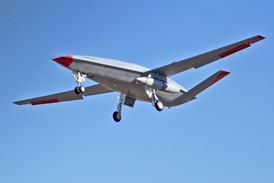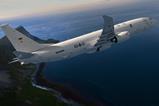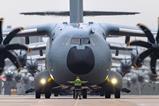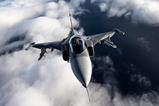Lockheed Martin is confident that it will be able to resume deliveries of its F-35 stealth fighter in the third quarter of this year, with the US Department of Defense (DoD) to begin by taking updated aircraft in an interim “combat training-capable” standard.
The airframer delivered no F-35s in the first three months of this year, as difficulties with completing its delayed Technical Refresh 3 (TR-3) modification dragged on. The zero figure marked a drop from 18 jets handed over in the last quarter of 2023.
Last July, the DoD began refusing to accept jets manufactured in the TR-3 operating standard, due to yet-to-be-completed flight testing of the updated software.

The halt also has been adopted by international customers including Belgium and Denmark, pending resolution of the TR-3 situation.
Speaking during the company’s first-quarter earnings call on 23 April, Lockheed chief executive James Taiclet said it expects to hand over a first TR-3 aircraft in the combat training-capable standard later this year. This “Release 1” step will enable pilots, maintainers and squadrons to begin preparing to use the updated jet operationally once its full software load gains approval several months later.
Current flight-test activities are using 95% of the interim training configuration’s full software load, Taiclet says.
“We’re encouraged by the solid progress made over the last few months towards resuming deliveries, including improvement in aircraft mission system capabilities and system stability as we advance from prior software versions toward the combat training-capable configuration,” he adds.
“We are highly confident based on the test results so far that those [aircraft] will be delivered in the third quarter.”
The transfer of “full combat capability” jets is expected to get under way in 2025.
“We remain focused on programme execution in terms of concurrent development, production and sustainment, and we’re bringing all relevant resources across our company and collaborating closely with our customers and suppliers to fully implement the TR-3 capabilities that everybody’s looking forward to getting,” Taiclet says.
“We are wringing out all of the software through all of the new hardware and integrating it into the aircraft.”
Lockheed has continued to produce F-35s at an uninterrupted rate of up to 156 jets per year despite the DoD’s delivery freeze, meaning that it is amassing a significant stored inventory.
Its current expectation is for aircraft shipments in 2024 to range between 75 and 110 aircraft, Taiclet says. It transferred 98 of the type in 2023: its lowest total so far this decade (see table).
| F-35 deliveries by quarter & year | |||||
|---|---|---|---|---|---|
| 2020 | 2021 | 2022 | 2023 | 2024 | |
| Q1 | 22 | 17 | 26 | 5 | 0 |
| Q2 | 25 | 37 | 35 | 45 | |
| Q3 | 31 | 36 | 27 | 30 | |
| Q4 | 42 | 52 | 53 | 18 | |
| Annual total | 120 | 142 | 141 | 98 | |
| Source: Lockheed Martin financial results | |||||
Meanwhile, Lockheed’s delivery performance in the first three months of this year totalled three F-16 fighters and four C-130J tactical transports: up from one and two respectively in the same period of 2023.
The company recorded net sales worth $17.2 billion in the first three months of 2024, up from $15.1 billion in the same period a year earlier. Its net earnings in the first quarter stood at $1.5 billion, while its backlog values $159 billion.
Lockheed’s Aeronautics business unit accounts for $67 billion of the backlog figure, with this including current firm orders for 373 F-35s, 132 F-16s and 80 C-130Js.
























